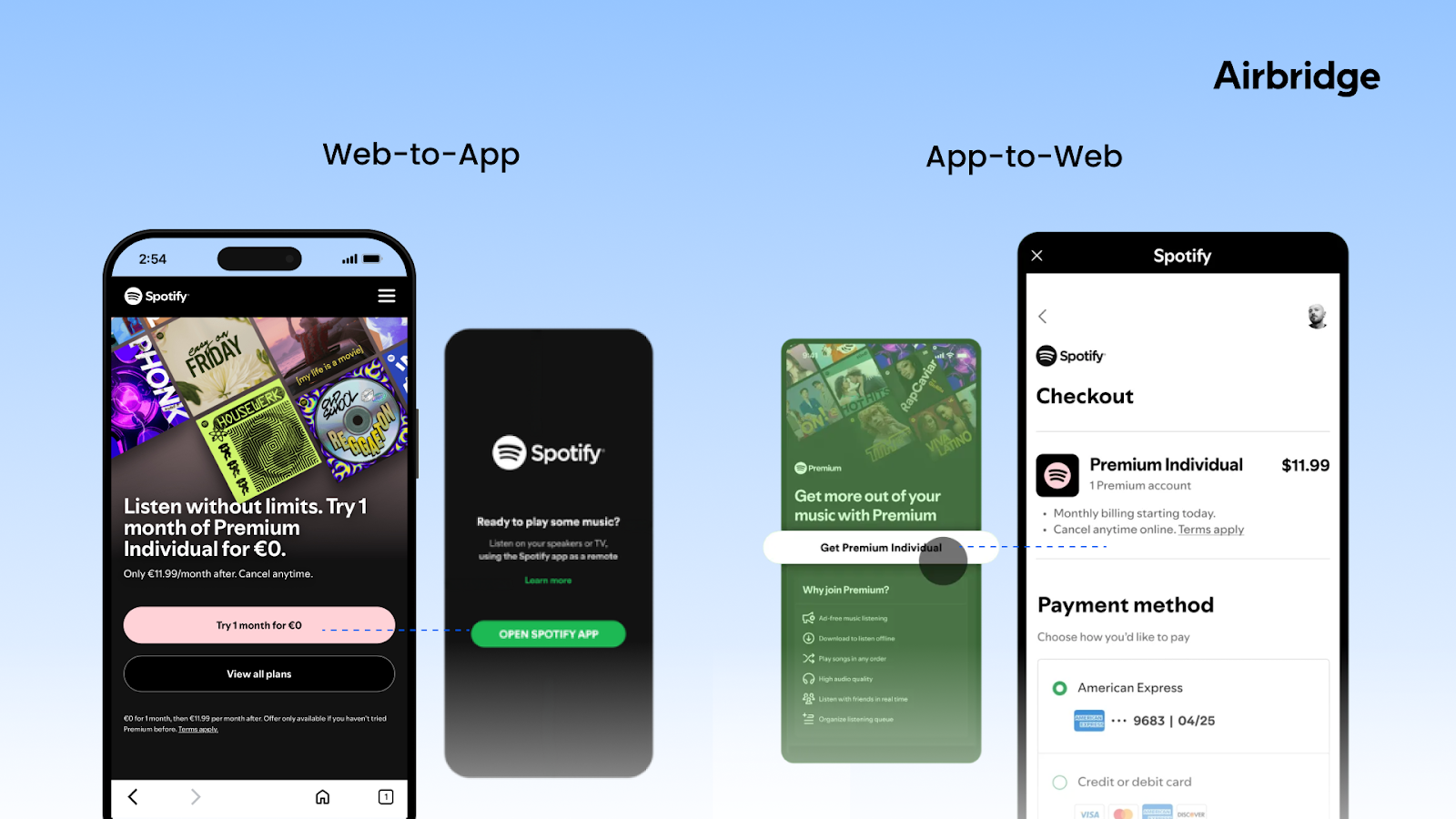Web-to-App vs. App-to-Web in Subscription Apps: Why Hybrid Funnels Win


Subscription apps do not just sell features — they sell behaviors. Think about it: no one pays for a meditation app just for background music; they’re paying for the rhythm of winding down every night. Fitness apps? It’s not just workouts; it’s consistency. Language apps? They’re monetizing the daily drip of progress.
That’s why the path users take, from their very first click to their first payment, matters more than most founders realize. Some apps focus on web-to-app funnels, while others lean into app-to-web flows. And then there are the smart ones mixing both.
But what do these terms actually mean, and why are more subscription brands blending them? Let’s break it down.
Think of a fitness ad on Instagram promising, “7 days to your healthiest self.” Instead of sending you straight to an app store, it leads to a clean landing page. The page loads quickly, explains the value, and ends with a simple call-to-action: “Continue in the app.” With one tap, you download. Inside the app, onboarding collects your preferences, shows you a quick win, and then presents the subscription paywall.
This is web-to-app in practice.
Here’s the play:
For marketers, the purpose is clear: acquisition. Users often find apps through search engines, paid ads, or blog content. The web is where curiosity grows, but the app is where habits take hold. Mobile apps offer push notifications, gamified streaks, and personalized onboarding flows that keep people engaged in ways the mobile web cannot match.
Now flip the script. A user downloads a productivity app, enjoys a free trial, and then sees a prompt to upgrade. Instead of handling payment inside the app, the upgrade button sends them to a web checkout page. There, they find flexible plans, more payment methods, and sometimes even lower pricing. Once the purchase is complete, premium access is activated instantly in the app.
This is app-to-web.
Here’s the flow:
The purpose here is monetization. By shifting payments to the web, brands avoid app store fees of 15 to 30%. More importantly, they gain freedom to test offers, create bundles, and use payment methods that fit local markets. At scale, the savings and flexibility are significant.
Here’s the kicker: most successful subscription apps don’t choose. They blend.
The music streaming giant has famously mastered the hybrid funnel by prioritizing web-based sign-ups to avoid paying high app store commissions on new subscribers.

Netflix is a classic example of using the web for sign-ups and the app for engagement. Although Netflix recently reintroduced in-app purchases on some platforms, its hybrid strategy remains prominent.
The popular language-learning app effectively uses a hybrid approach to maximize conversions and retain revenue, sometimes offering different pricing on the web versus the app stores.
The dating app uses a hybrid approach to offer promotional pricing and handle billing outside of the traditional app store system for certain offers.
The weight loss app built its early growth on a web-to-app funnel, using it as a central pillar of its marketing strategy.

Why the two-step dance? Because acquisition and monetization are different battles. You need the app to build sticky user behavior, but you need the web to protect margins and test offers freely.
It’s like running a café: you want people walking through the door (that’s web-to-app), but you also don’t want to pay a middleman every time someone buys a latte (that’s app-to-web).
Picture three funnels side by side:
This method combines reach with control. Brands acquire users broadly through the web and then monetize on their own terms, while keeping the app as the daily engine of engagement.
Hybrid funnels create new opportunities but also new problems. Users move back and forth between web and app, and attribution becomes messy.
Which ad brought the install? Did the subscription happen on the web or in-app? Which funnel delivers better lifetime value (LTV)? Without clarity, spending decisions become guesswork.
That’s where measurement partners like Airbridge step in. Airbridge connects web and app data, giving marketers the full picture: which campaigns drive installs, which checkout flows bring in revenue, and which paths deliver loyal subscribers. With accurate measurement, the hybrid funnel moves from theory to a reliable growth engine.
The answer is neither on its own.
The real growth story for subscription apps is in combining both. That is what the most resilient apps in 2025 are doing, supported by measurement systems that track every step. Because in subscription apps, the path a user takes matters just as much as where they end up.
👉 Want to measure your hybrid funnels without blind spots? See how Airbridge can help.


